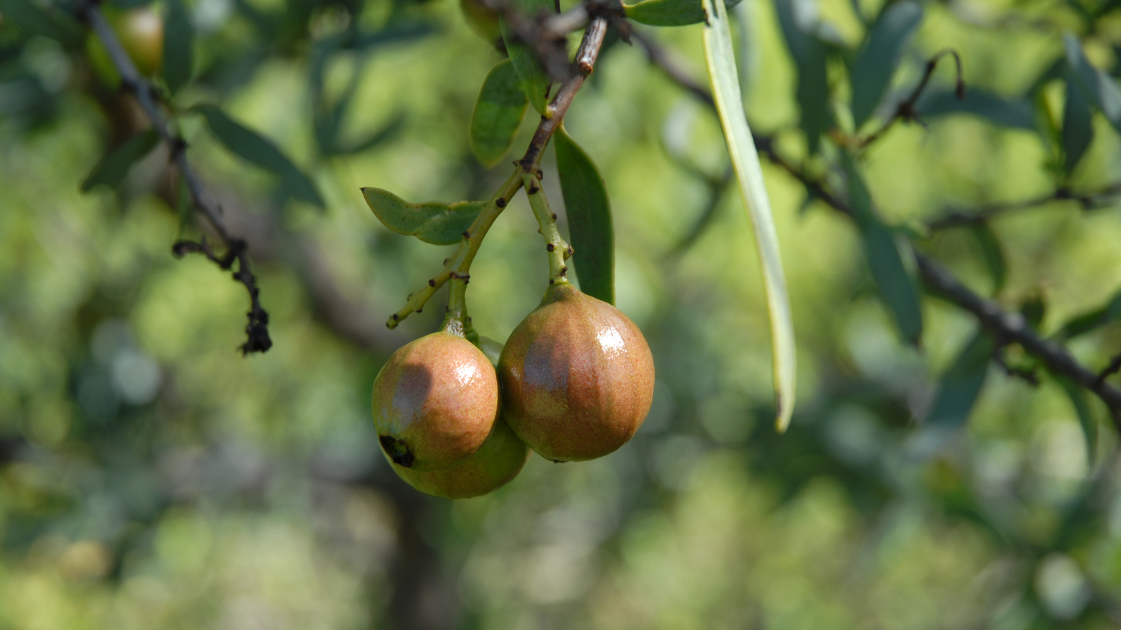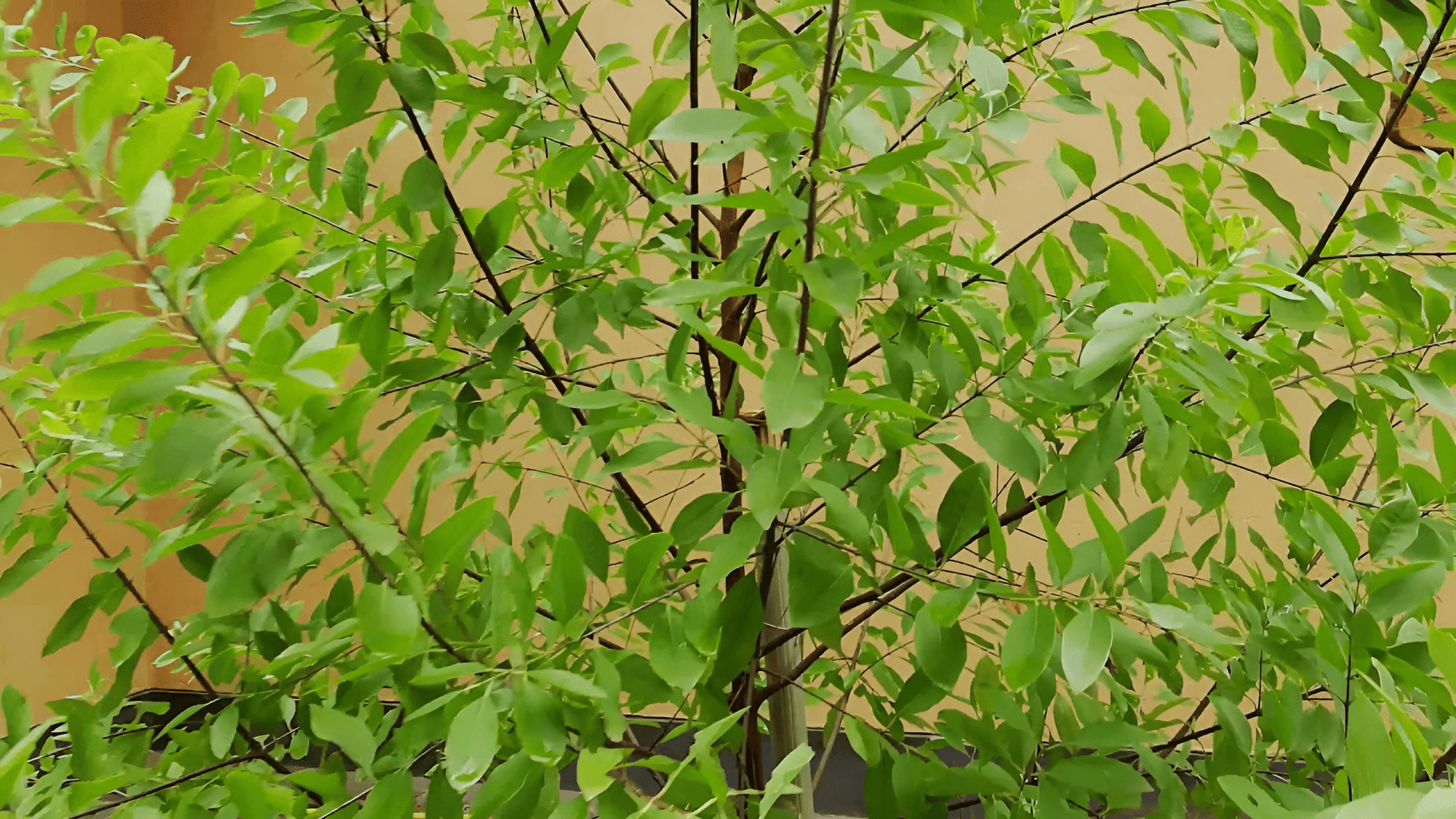
The Aromatic Gem: Nurturing Your Sandalwood Nut Tree (Santalum acuminatum)
The Sandalwood nut tree, scientifically known as Santalum acuminatum, is a unique and increasingly popular Australian native that offers a dual reward: its fragrant heartwood, renowned for centuries in perfumery and traditional medicine, and its edible, nutritious nuts, often referred to as "quandongs." While the extraction of sandalwood oil is a specialized and often regulated process, cultivating the tree for its delicious nuts and its ornamental beauty is an accessible and rewarding endeavor for home gardeners and commercial growers alike. This article delves into the intricacies of sandalwood nut tree care, providing a comprehensive guide to ensure your tree thrives and flourishes.
Understanding Your Sandalwood Nut Tree
Before embarking on cultivation, it’s crucial to understand the fundamental needs of Santalum acuminatum. This semi-parasitic evergreen shrub or small tree is native to arid and semi-arid regions of Australia, adapted to survive in challenging conditions. Its hemi-parasitic nature means it establishes a connection with the root systems of neighboring plants, drawing water and essential nutrients. This characteristic is vital to its survival and influences how we approach its planting and care.

Climate and Soil: The Foundation of Success
Sandalwood nut trees are remarkably resilient and thrive in a range of climates, particularly those with hot, dry summers and mild winters. They are frost-tolerant to a degree but will perform best in USDA hardiness zones 9-11.
- Sunlight: Full sun is paramount. Sandalwood nut trees require at least six to eight hours of direct sunlight daily to produce optimal fruit and maintain healthy growth. Partial shade may be tolerated in extremely hot climates, but it can reduce fruit yield.
- Soil: While adaptable, these trees prefer well-draining soils. They can tolerate sandy, loamy, and even slightly alkaline soils. Poor drainage is a primary cause of root rot, so amending heavy clay soils with organic matter or planting in raised beds is highly recommended. Avoid overly rich, heavily fertilized soils, as this can promote lush foliage at the expense of fruit production and can also make the tree more susceptible to root rot.
- Water: Once established, sandalwood nut trees are drought-tolerant due to their deep taproot system. However, consistent watering is crucial during the initial establishment phase (the first 1-2 years). Water deeply and less frequently, allowing the soil to dry out slightly between waterings. Mature trees generally require supplemental watering only during prolonged dry spells. Overwatering is detrimental and can lead to root diseases.
Planting Your Sandalwood Nut Tree

The success of your sandalwood nut tree begins with proper planting.
- Timing: The ideal time to plant is during the cooler, wetter months, typically in autumn or early spring, depending on your local climate. This allows the roots to establish before the onset of summer heat.
- Location: Choose a sunny spot with good air circulation. Crucially, consider the semi-parasitic nature. While it can survive without a host, its vigor and fruit production are often enhanced by the presence of suitable host plants. Common hosts include native Australian acacias, eucalypts, and saltbushes. Plant the sandalwood nut tree at least 1-2 meters away from potential hosts to allow for independent root development, but close enough for their root systems to eventually intertwine.
- Planting Process:
- Dig a hole that is twice as wide and as deep as the root ball of your sapling.
- Gently remove the sapling from its container, taking care not to disturb the root system excessively. If the roots are circling, gently loosen them.
- Place the sapling in the center of the hole, ensuring the top of the root ball is level with the surrounding soil.
- Backfill the hole with the excavated soil, mixing in a small amount of compost or well-rotted manure for improved fertility, but avoid over-enrichment.
- Water thoroughly to settle the soil and eliminate air pockets.
- Apply a layer of mulch around the base of the tree, keeping it a few inches away from the trunk to prevent rot. Mulch helps retain moisture, suppress weeds, and regulate soil temperature.
Ongoing Care and Maintenance
Nurturing your sandalwood nut tree involves a few key practices:
- Watering: As mentioned, established trees are drought-tolerant. Monitor the soil moisture, especially during hot, dry periods. Water deeply when the top few inches of soil feel dry.
- Fertilizing: Sandalwood nut trees generally do not require heavy fertilization. Excessive nitrogen can lead to vigorous leafy growth at the expense of fruit. A light application of a balanced, slow-release fertilizer in spring can be beneficial, especially if your soil is nutrient-poor. Compost or aged manure is often sufficient.
- Pruning: Pruning is primarily for shaping, removing dead or diseased branches, and improving air circulation. Light pruning can be done at any time of the year, but major pruning should be undertaken after fruiting or in late winter before the growing season begins. Avoid excessive pruning, as it can reduce fruit yield. Prune to maintain an open canopy, allowing sunlight to penetrate and air to circulate, which helps prevent fungal diseases.
- Pest and Disease Management: Sandalwood nut trees are generally robust and resistant to many pests and diseases. However, they can occasionally be affected by:
- Root Rot: This is the most common problem, usually caused by overwatering or poor drainage. Ensure good drainage and avoid waterlogged conditions.
- Scale Insects and Spider Mites: These can be treated with horticultural oil or insecticidal soap.
- Fruit Fly: In some regions, fruit flies can be a problem. Netting fruit as it ripens or using fruit fly traps can help.
- Birds: Birds can be attracted to the ripening fruit. Netting can be an effective deterrent.
Fruiting and Harvesting
Sandalwood nut trees typically begin to bear fruit within 3-5 years of planting, with peak production occurring in mature trees.
- Fruiting Season: The fruit, a drupe, ripens from late spring through summer, depending on the climate. The fruit starts as green and gradually turns red or yellowish-red as it ripens.
- Harvesting: The nuts are ready to harvest when the fruit is fully ripe and begins to soften. You can gently shake the branches to dislodge ripe fruit or pick them directly from the tree. The outer fleshy part of the fruit is edible and can be eaten fresh, but it is often quite tart. The real prize is the nut inside.
- Processing the Nuts:
- Separating the Flesh: The fleshy outer part of the fruit can be easily removed by rinsing the fruit under water or by hand.
- Drying the Nuts: The nuts need to be dried thoroughly to make them easier to crack and to preserve them. Spread them out in a single layer in a well-ventilated area, out of direct sunlight, for several days until they are completely dry.
- Cracking the Nuts: The shell of the sandalwood nut is quite hard. You can crack them using a nutcracker, a hammer (carefully!), or by soaking them in water for a few hours to soften the shell slightly before cracking.
- Eating the Kernels: The kernels inside are delicious, with a rich, slightly oily, and nutty flavor, often compared to almonds or macadamias. They can be eaten raw, roasted, or used in a variety of culinary applications.
The Dual Benefit: Sandalwood Oil
While this article focuses on the nuts, it’s worth noting the tree’s namesake: sandalwood oil. The oil is primarily extracted from the heartwood of mature trees. The process is complex and typically involves distillation. The tree’s value for oil production increases with age, and it can take decades for a tree to produce wood suitable for oil extraction. It’s important to be aware of regulations surrounding sandalwood harvesting, as some species are endangered. For home growers, focusing on the nuts is a more practical and sustainable approach.
Sandalwood Nut Tree Recipes
The quandong nut is a versatile ingredient, offering a unique flavor to both sweet and savory dishes. Here are a few recipe ideas to get you started:
1. Roasted Quandong Nuts
-
Ingredients:
- 1 cup dried quandong nut kernels
- 1 tablespoon olive oil or melted butter
- Salt to taste
- Optional: Smoked paprika, chili powder, or herbs
-
Instructions:
- Preheat your oven to 150°C (300°F).
- In a bowl, toss the quandong nut kernels with olive oil or butter, salt, and any desired seasonings.
- Spread the nuts in a single layer on a baking sheet.
- Roast for 15-20 minutes, or until fragrant and lightly golden. Stir halfway through to ensure even roasting.
- Let them cool completely before serving. Enjoy as a snack or add to salads and trail mixes.
2. Quandong Nut Granola
-
Ingredients:
- 2 cups rolled oats
- 1/2 cup quandong nut kernels, roughly chopped
- 1/4 cup sunflower seeds
- 1/4 cup pumpkin seeds
- 2 tablespoons chia seeds
- 1/4 cup honey or maple syrup
- 1/4 cup coconut oil, melted
- 1 teaspoon vanilla extract
- 1/2 teaspoon cinnamon
- Pinch of salt
-
Instructions:
- Preheat your oven to 150°C (300°F).
- In a large bowl, combine the oats, chopped quandong nuts, sunflower seeds, pumpkin seeds, chia seeds, cinnamon, and salt.
- In a separate small bowl, whisk together the honey or maple syrup, melted coconut oil, and vanilla extract.
- Pour the wet ingredients over the dry ingredients and stir well to combine, ensuring everything is evenly coated.
- Spread the mixture in a single layer on a baking sheet lined with parchment paper.
- Bake for 25-30 minutes, stirring every 10 minutes, until the granola is golden brown and toasted.
- Let it cool completely on the baking sheet. It will crisp up as it cools.
- Store in an airtight container. Serve with yogurt, milk, or fresh fruit.
3. Quandong Nut Pesto
-
Ingredients:
- 2 cups fresh basil leaves
- 1/2 cup quandong nut kernels
- 1/2 cup grated Parmesan cheese
- 2 cloves garlic, minced
- 1/2 cup extra virgin olive oil
- Salt and freshly ground black pepper to taste
- Optional: A squeeze of lemon juice
-
Instructions:
- In a food processor, combine the basil leaves, quandong nut kernels, Parmesan cheese, and garlic.
- Pulse until the ingredients are finely chopped.
- With the food processor running, slowly drizzle in the olive oil until the pesto reaches your desired consistency.
- Season with salt and pepper to taste. Add a squeeze of lemon juice for brightness, if desired.
- Use immediately on pasta, as a spread for sandwiches, or as a dip. Store any leftover pesto in an airtight container in the refrigerator, topped with a thin layer of olive oil to prevent browning.
Conclusion
Cultivating a sandalwood nut tree is a journey that rewards patience and attention to detail. By understanding its unique needs for sunlight, well-draining soil, and appropriate watering, you can foster a healthy and productive tree. The harvest of its nutritious and flavorful nuts offers a delicious connection to Australia’s rich natural heritage. Whether you’re an experienced gardener or a novice looking for a unique addition to your landscape, the sandalwood nut tree, Santalum acuminatum, is a truly aromatic and culinary gem worth nurturing.

